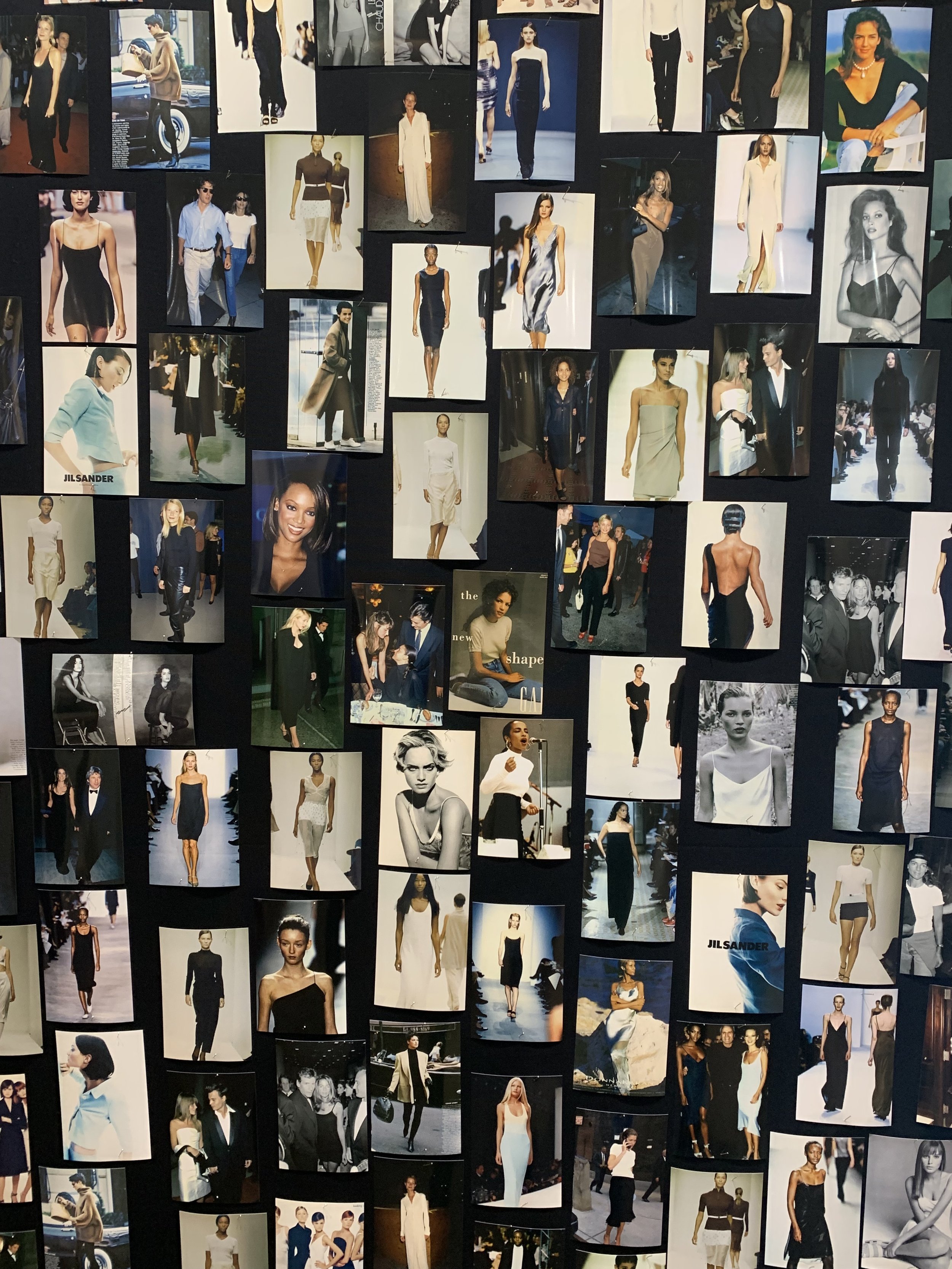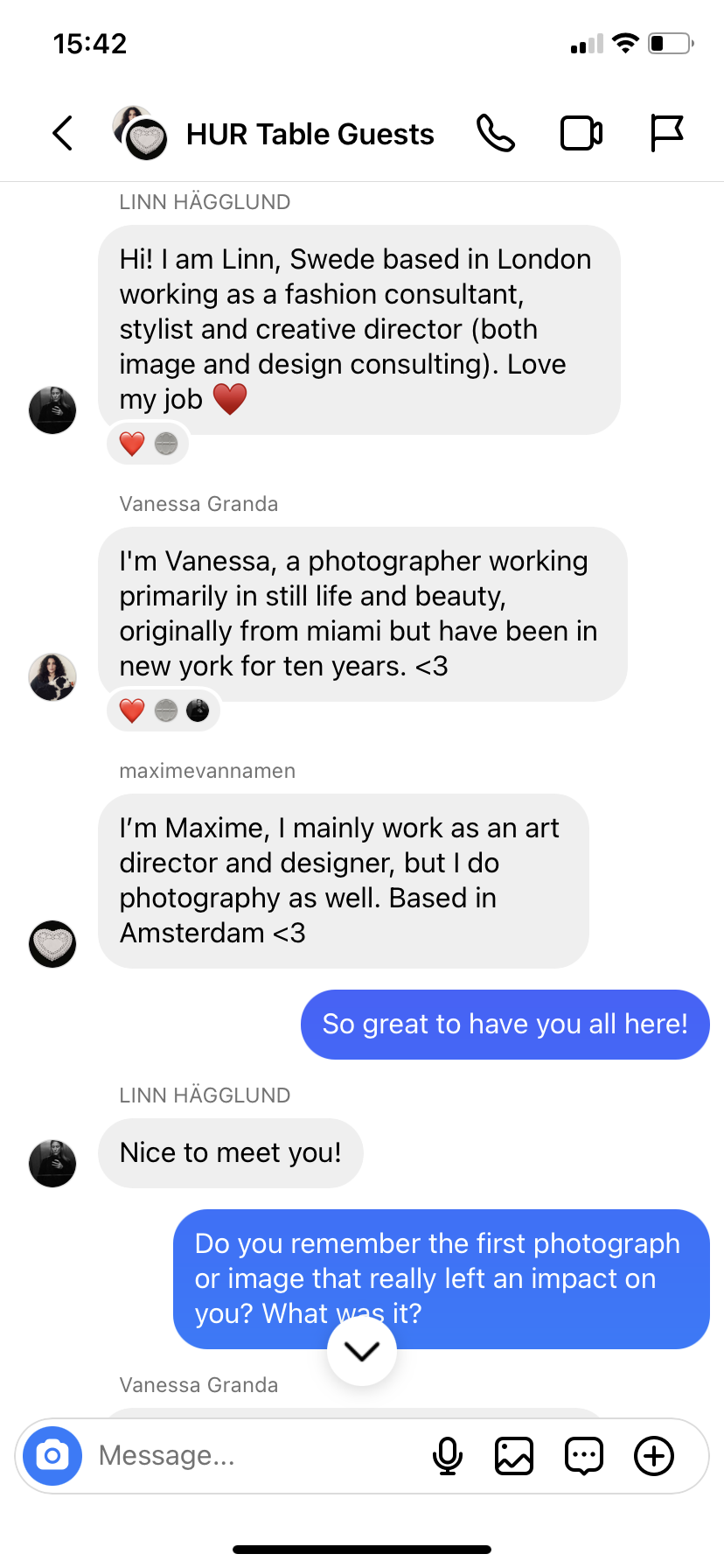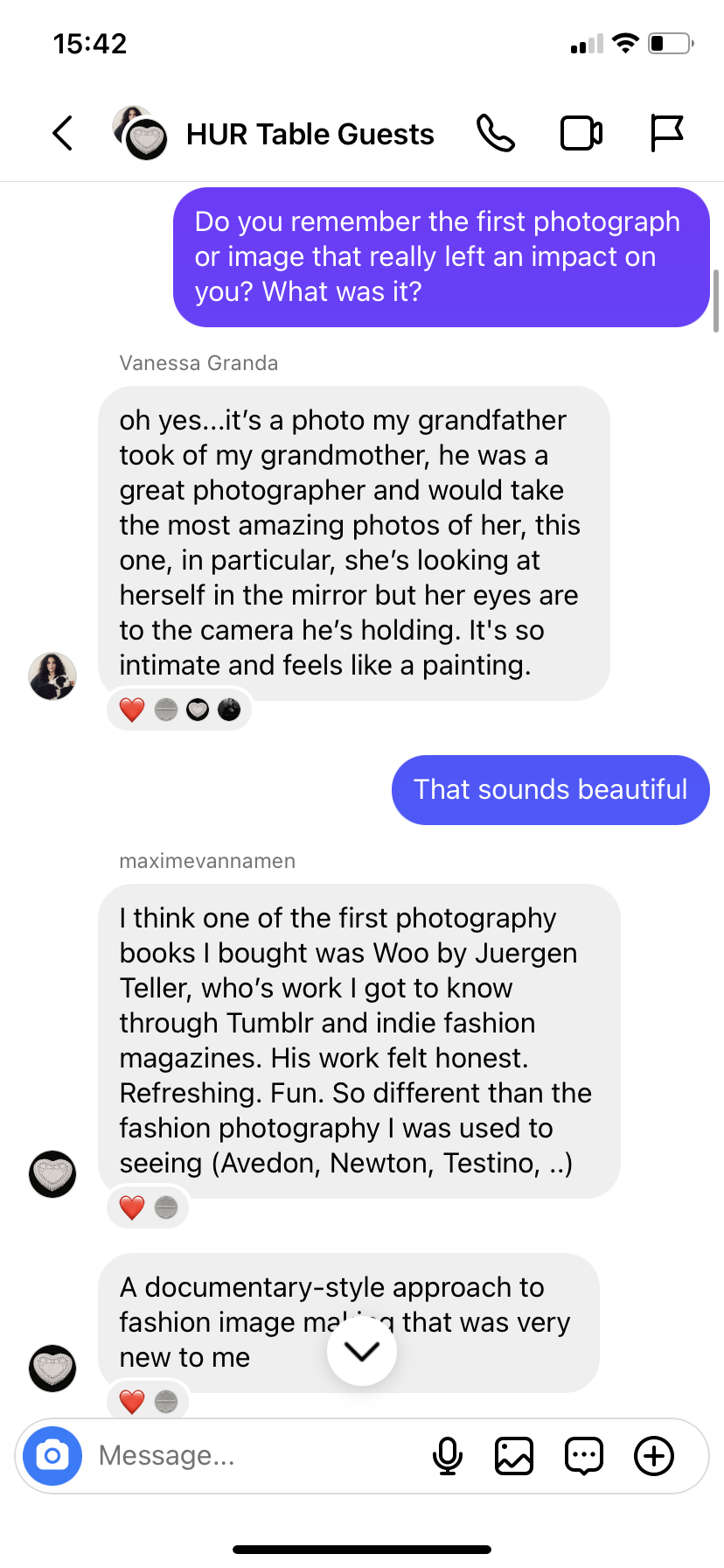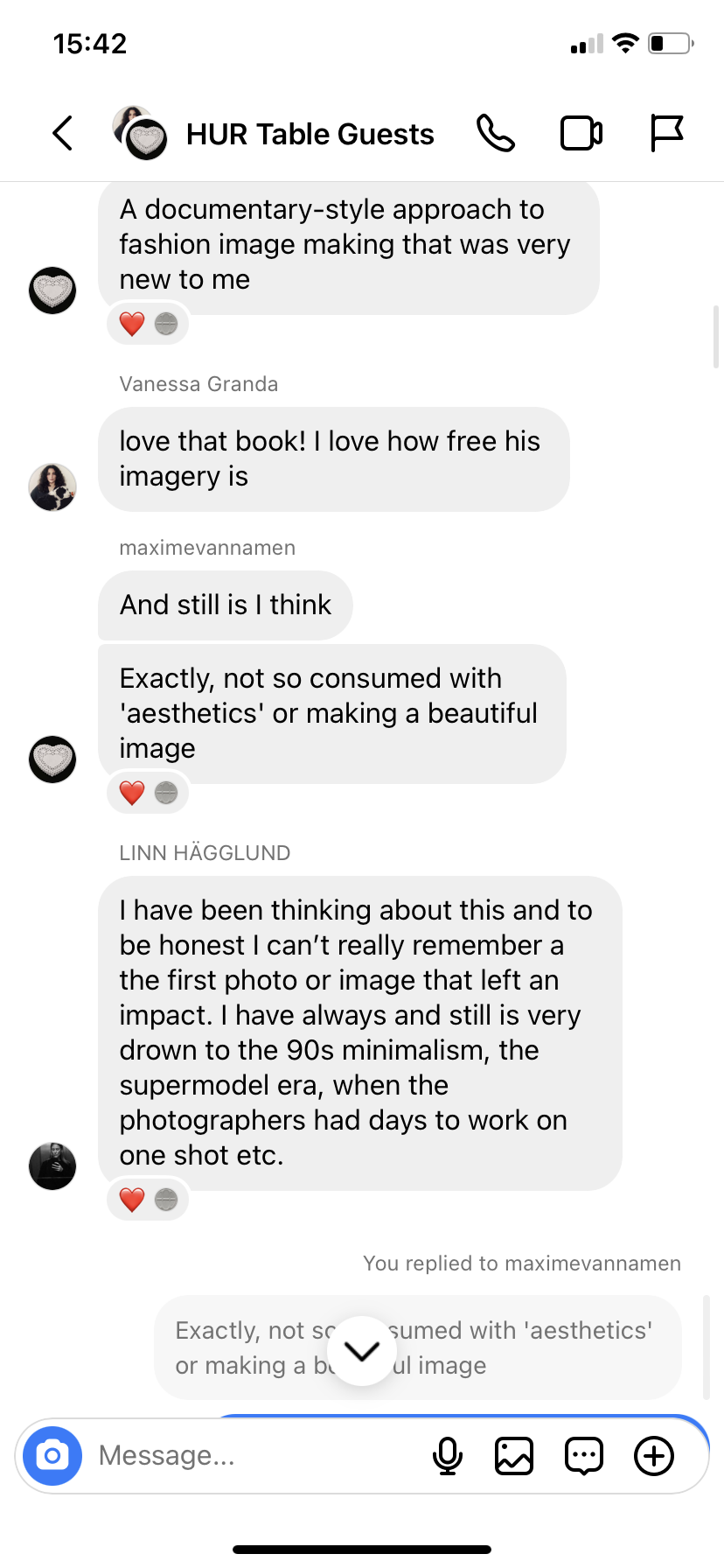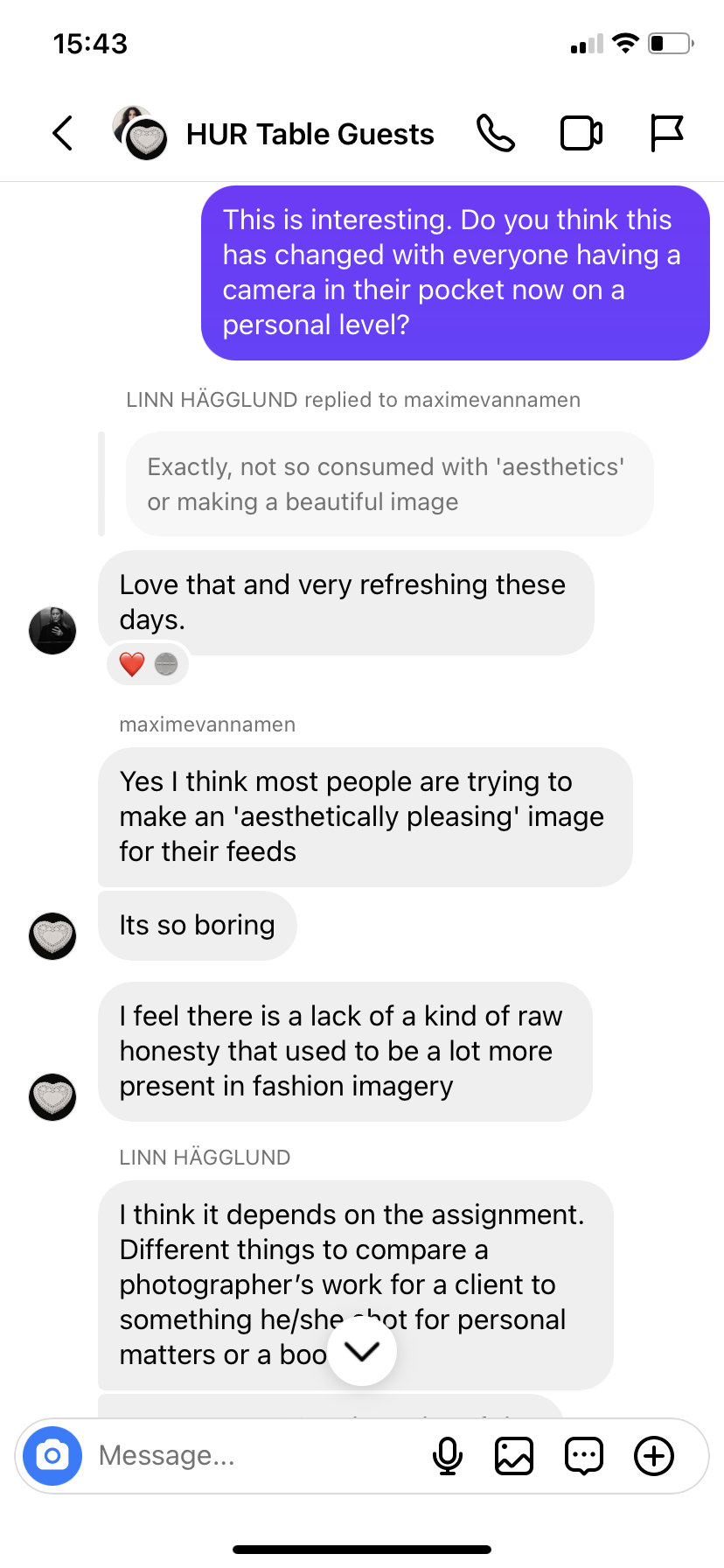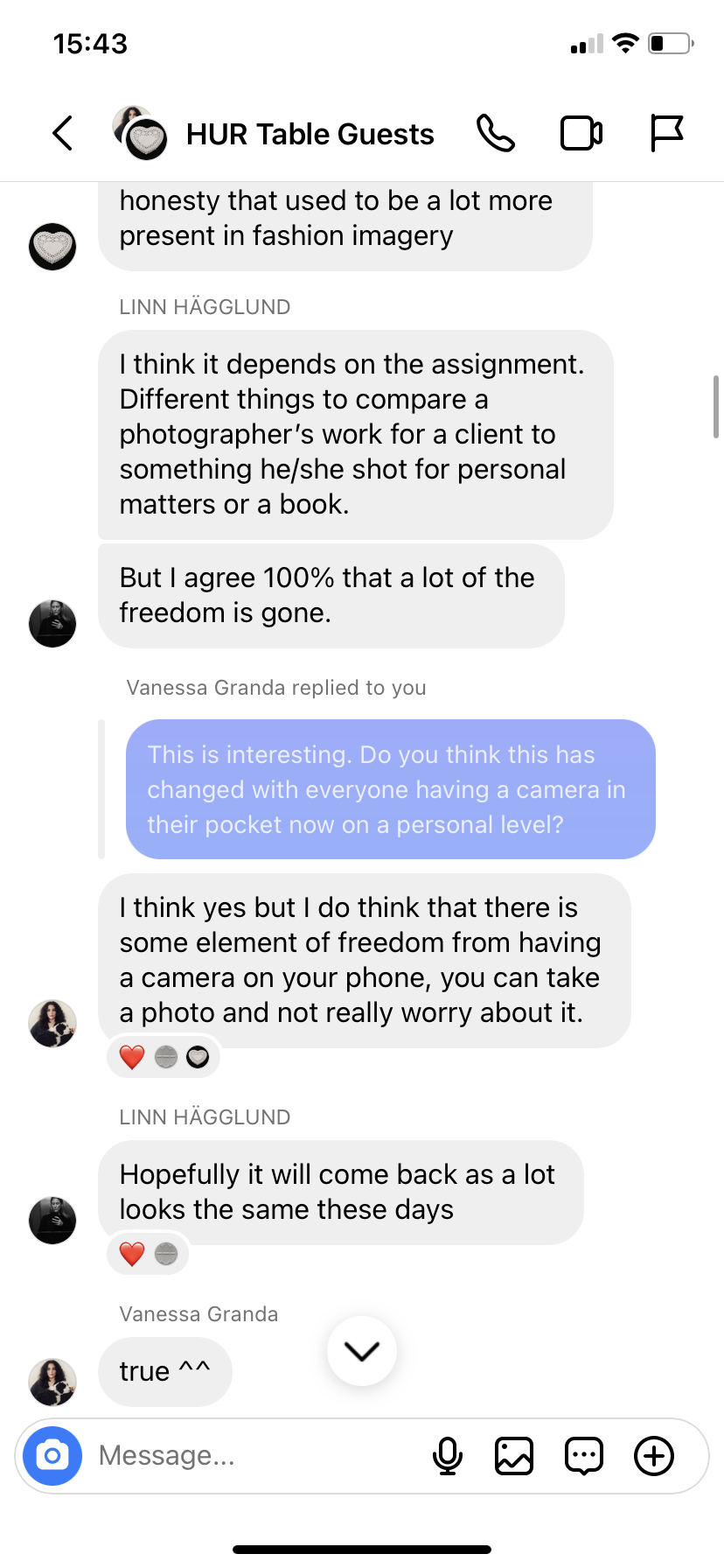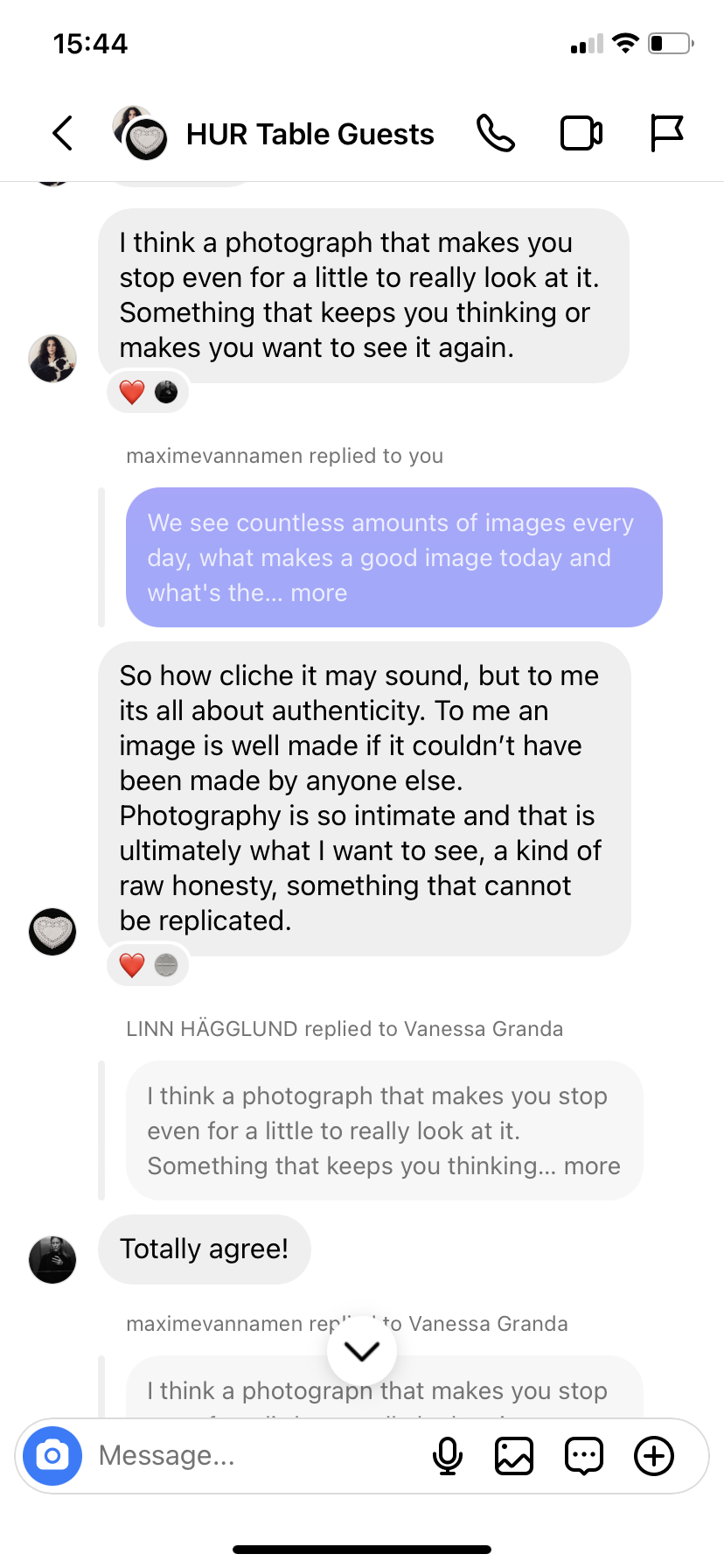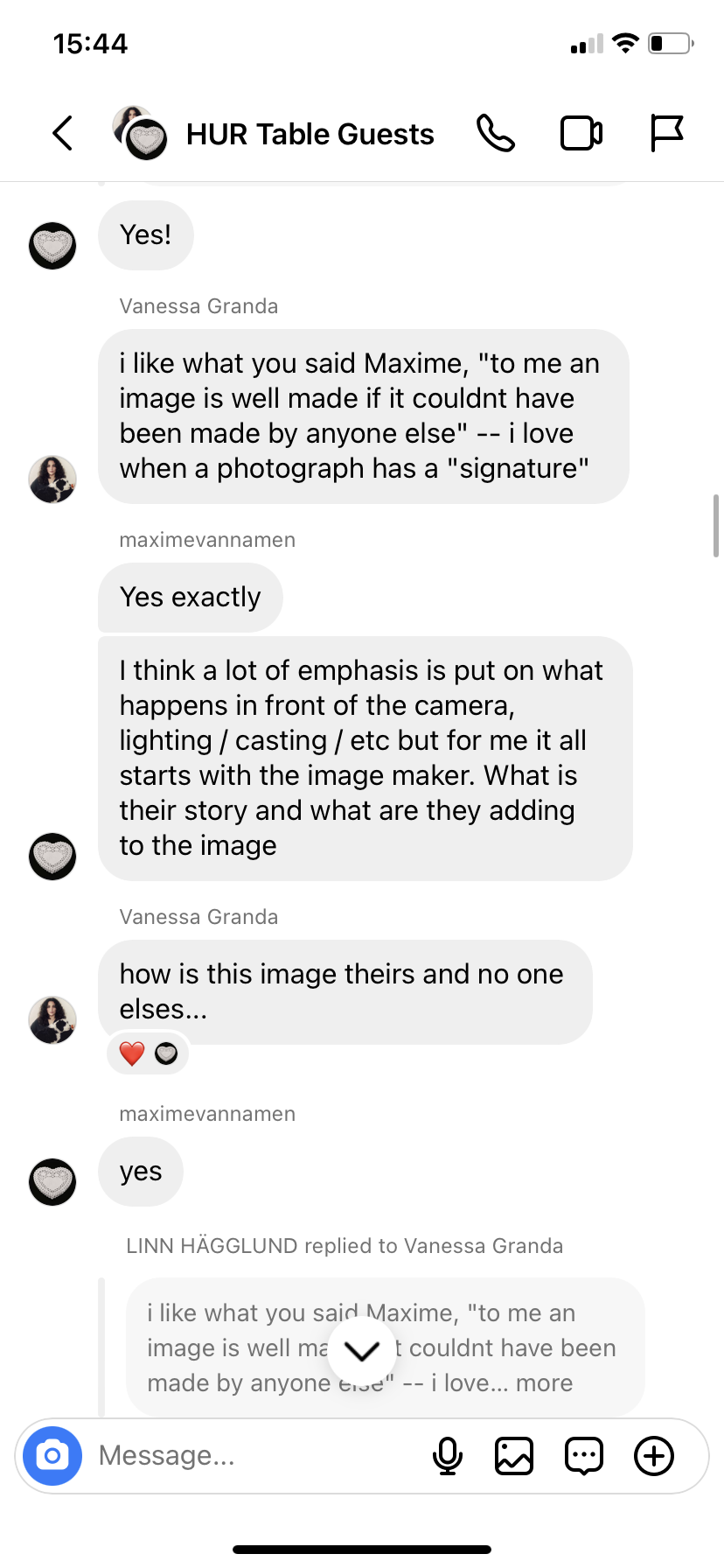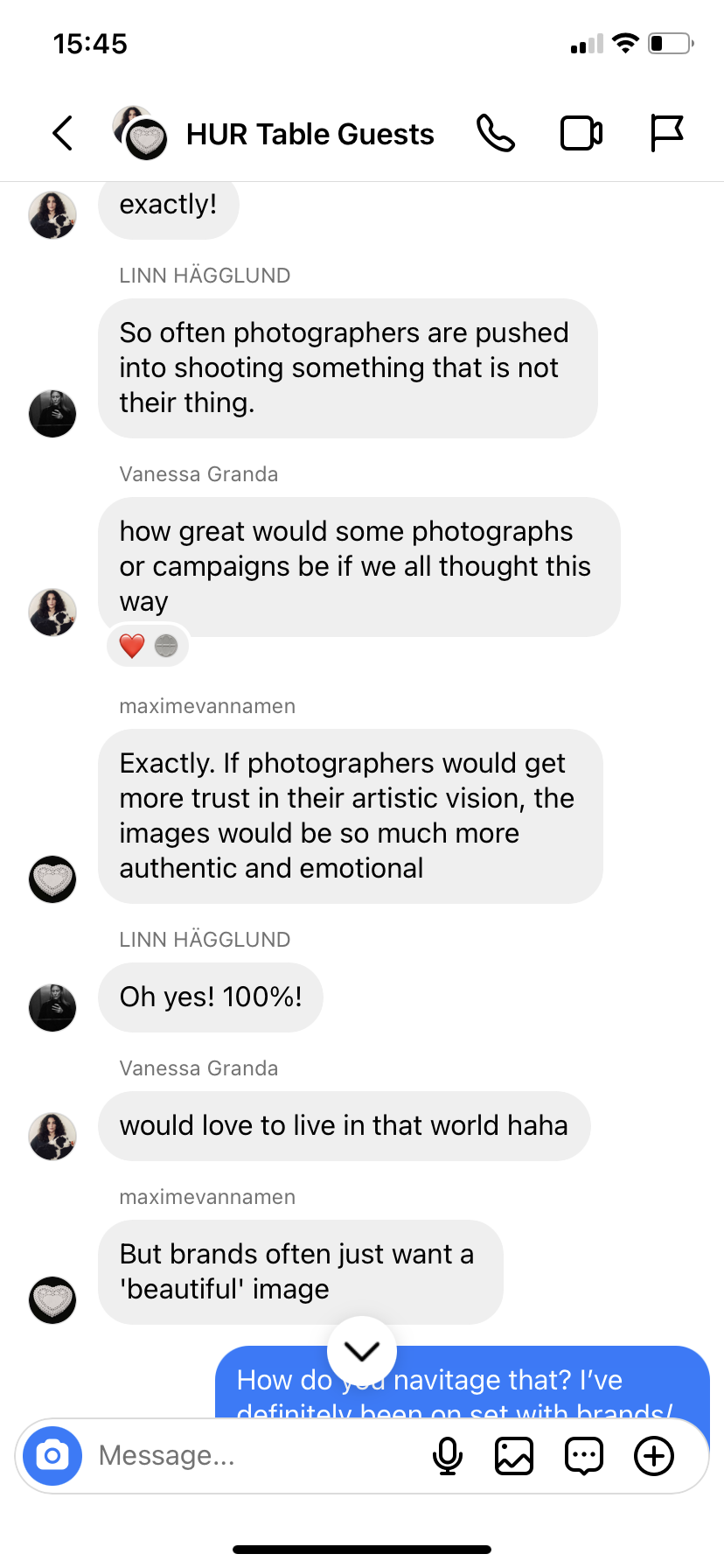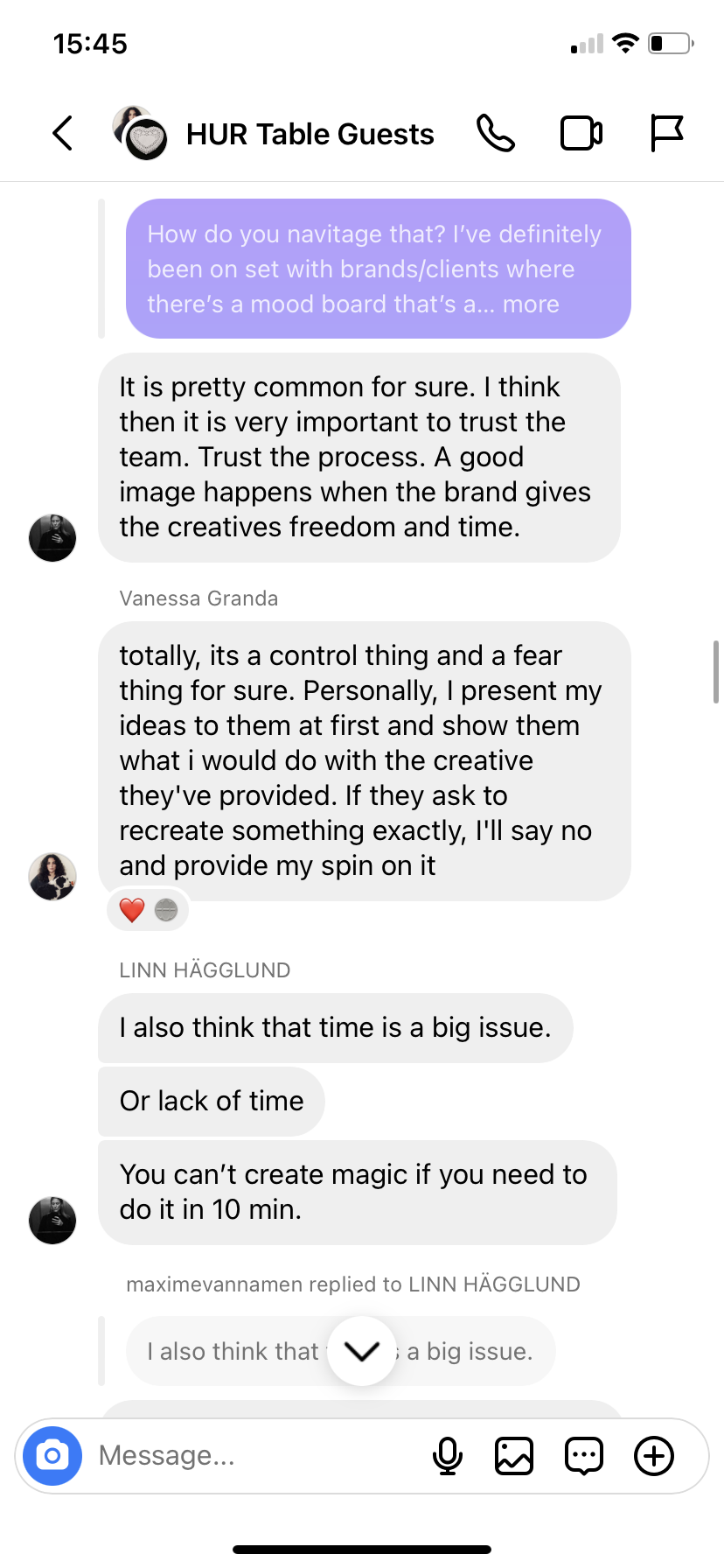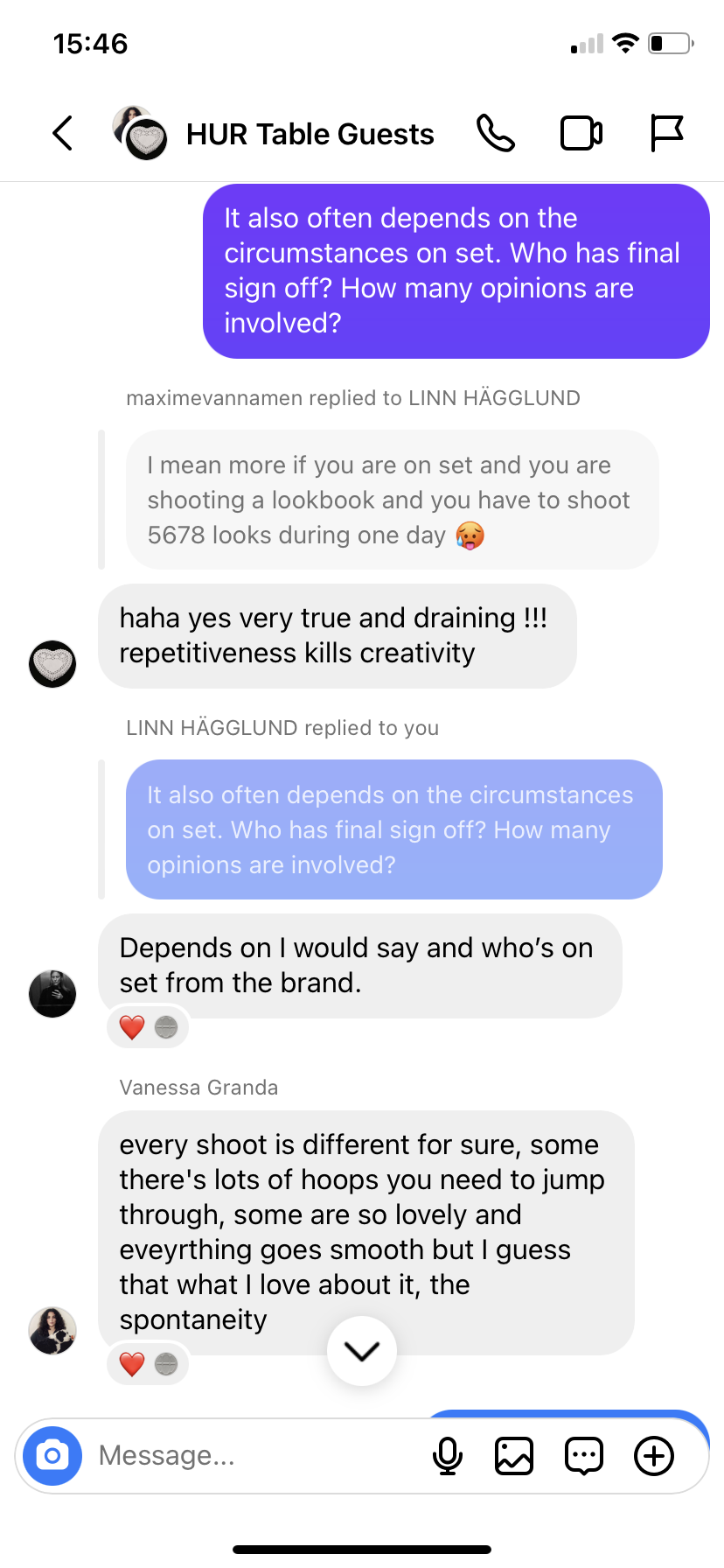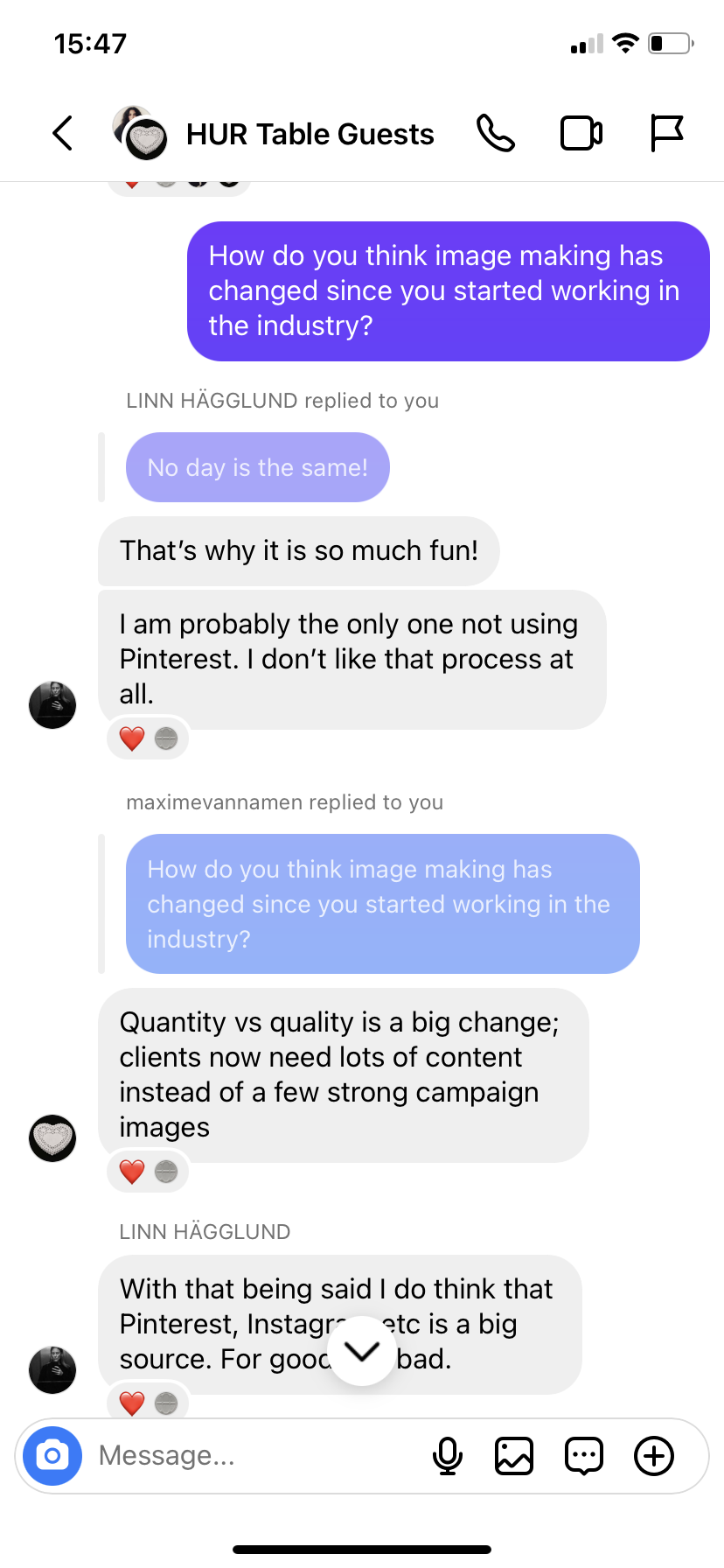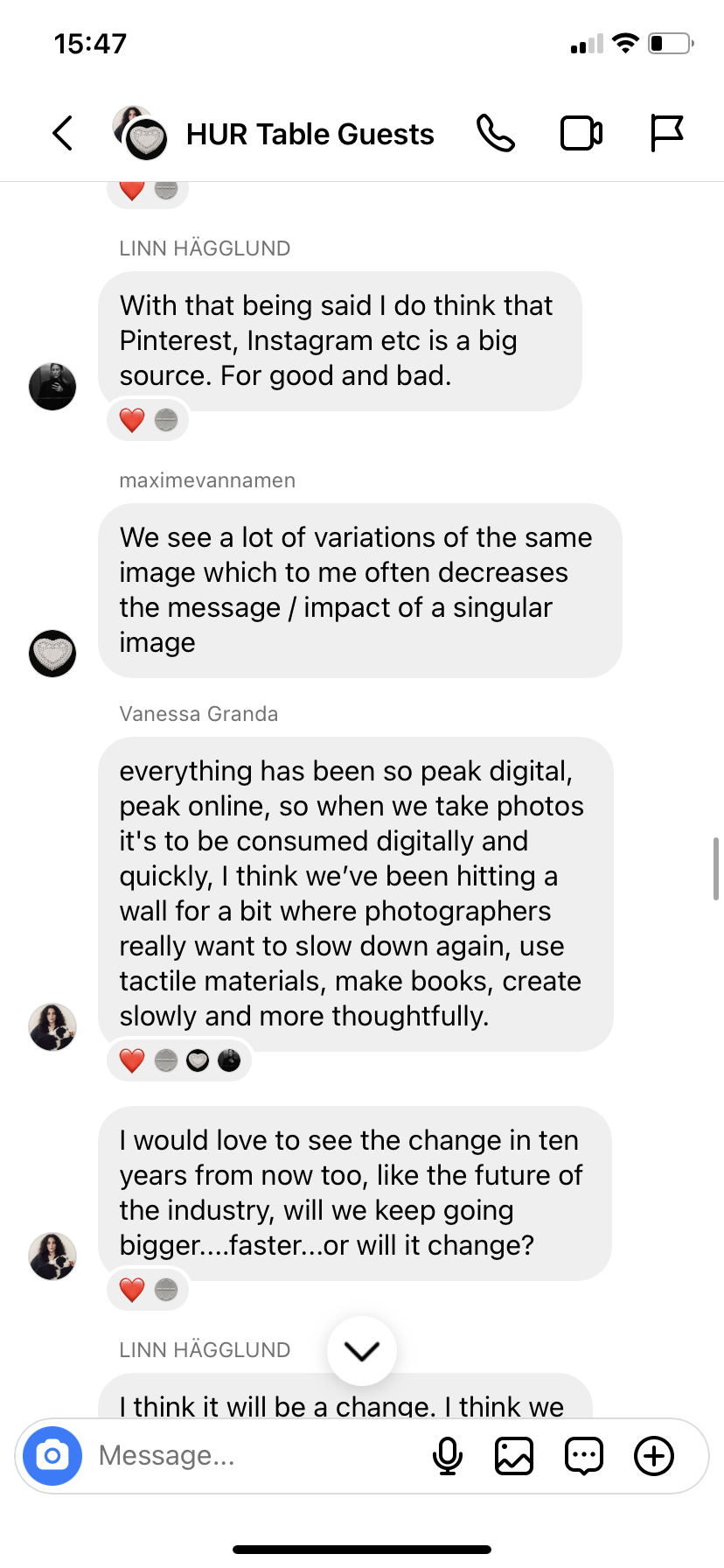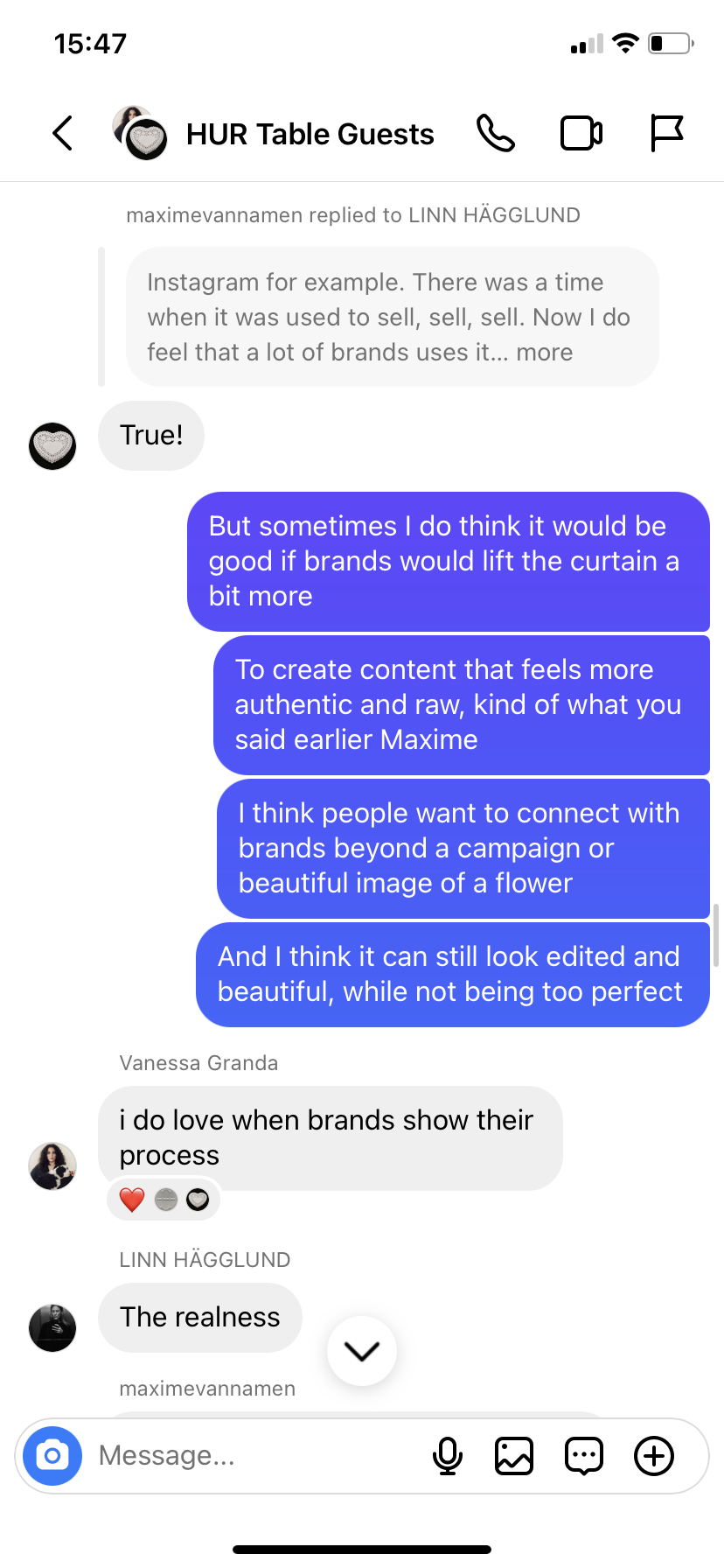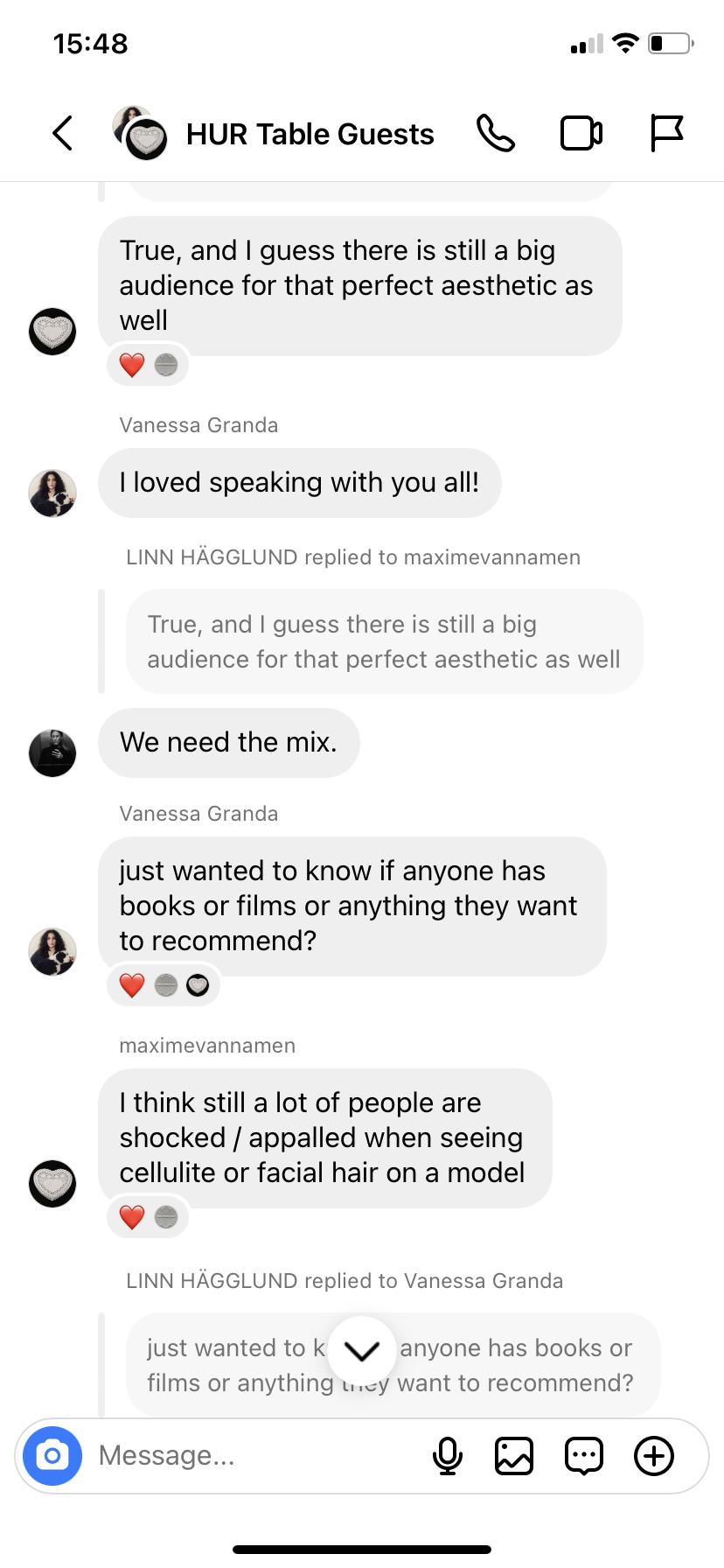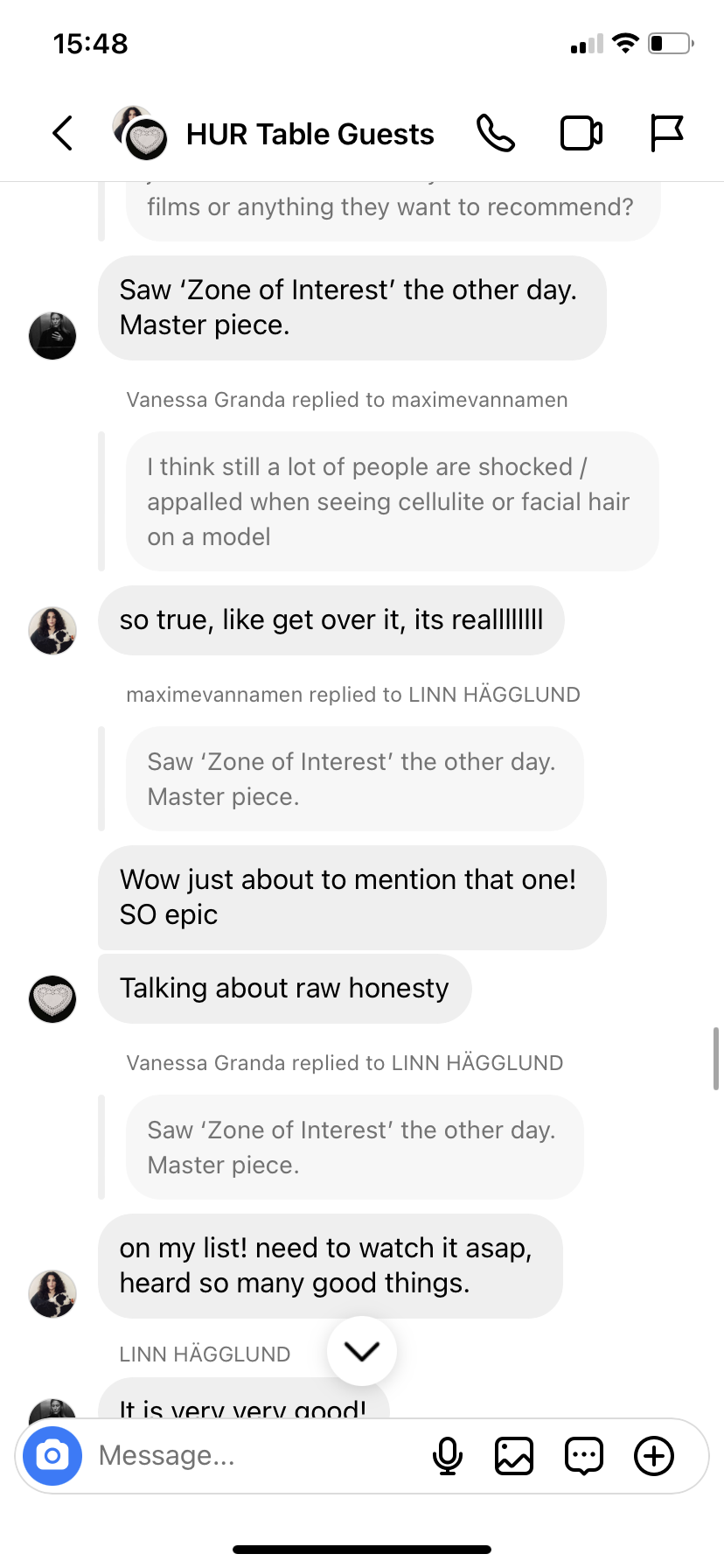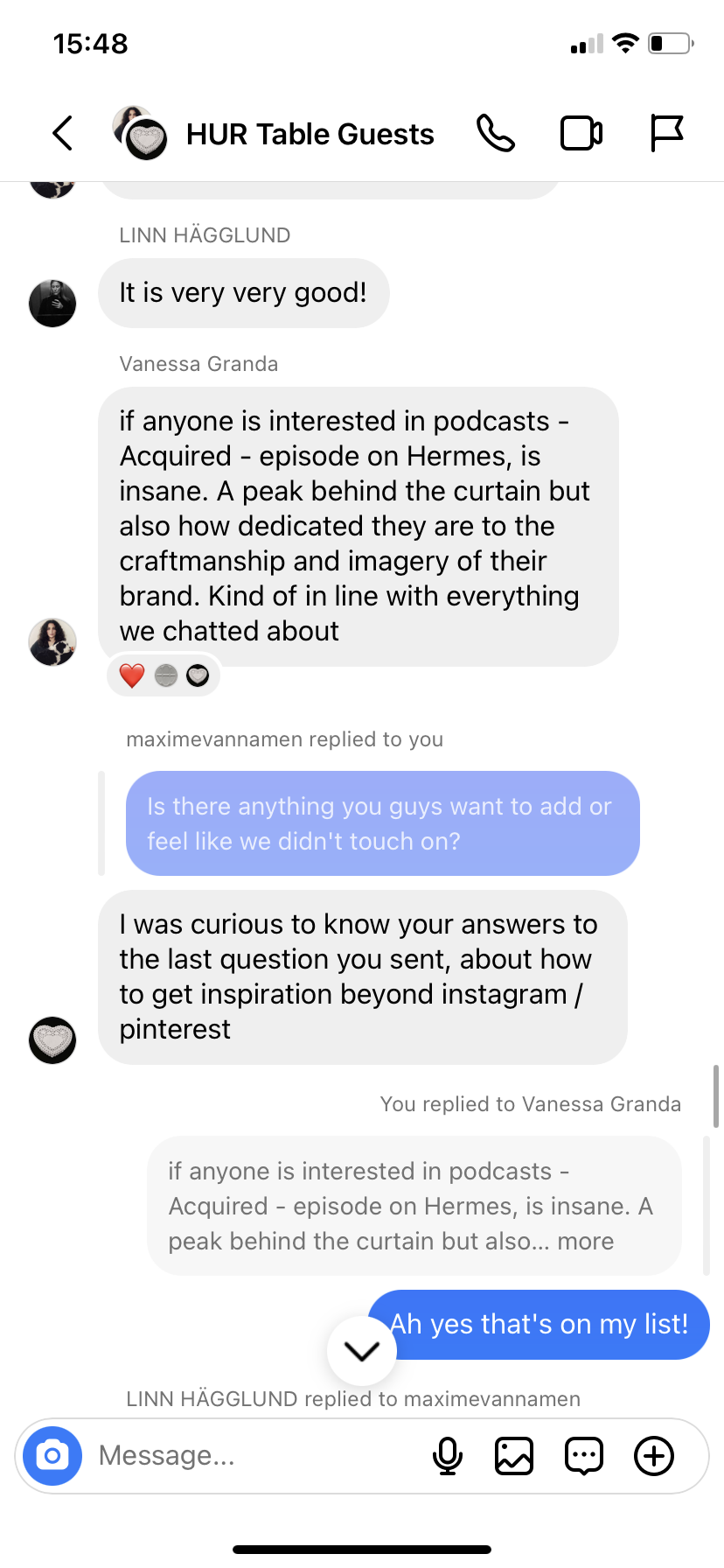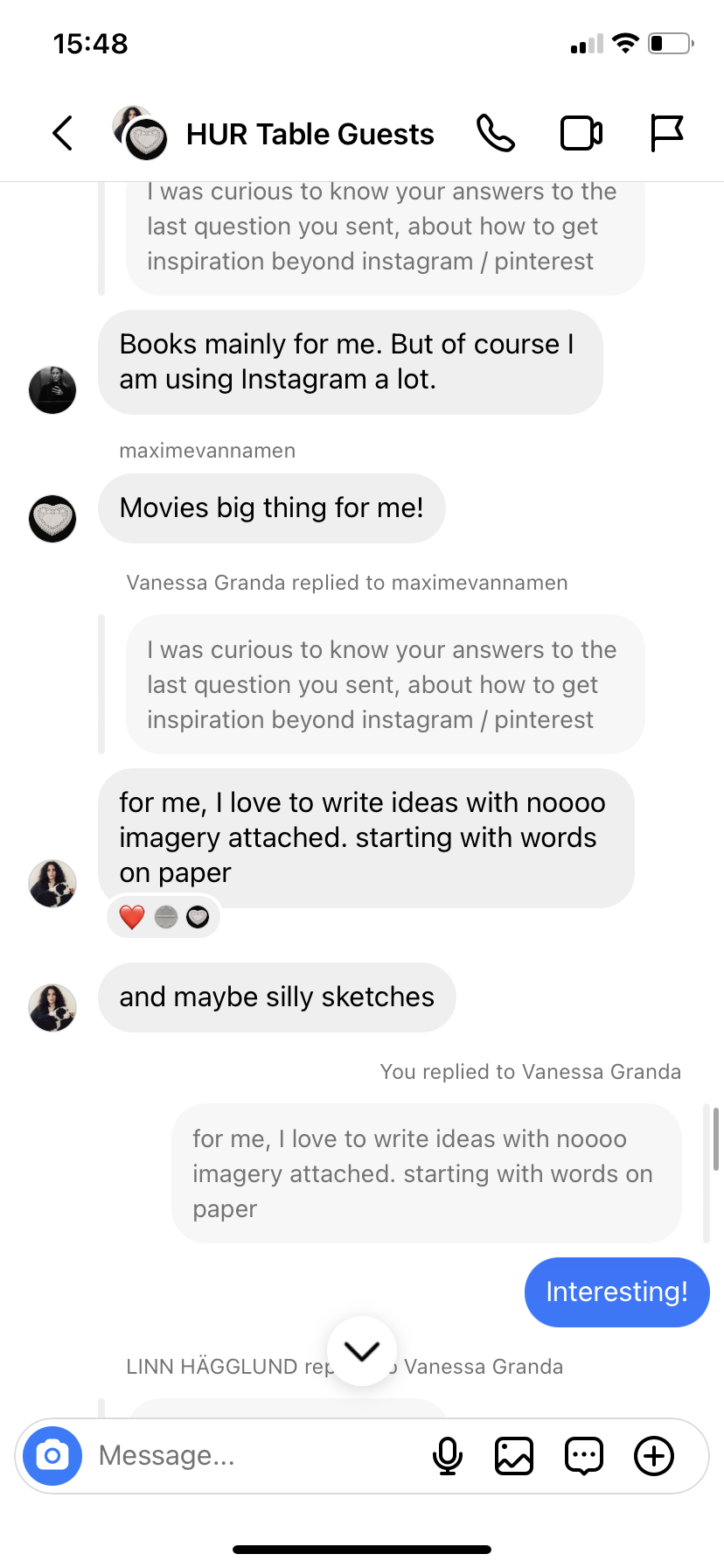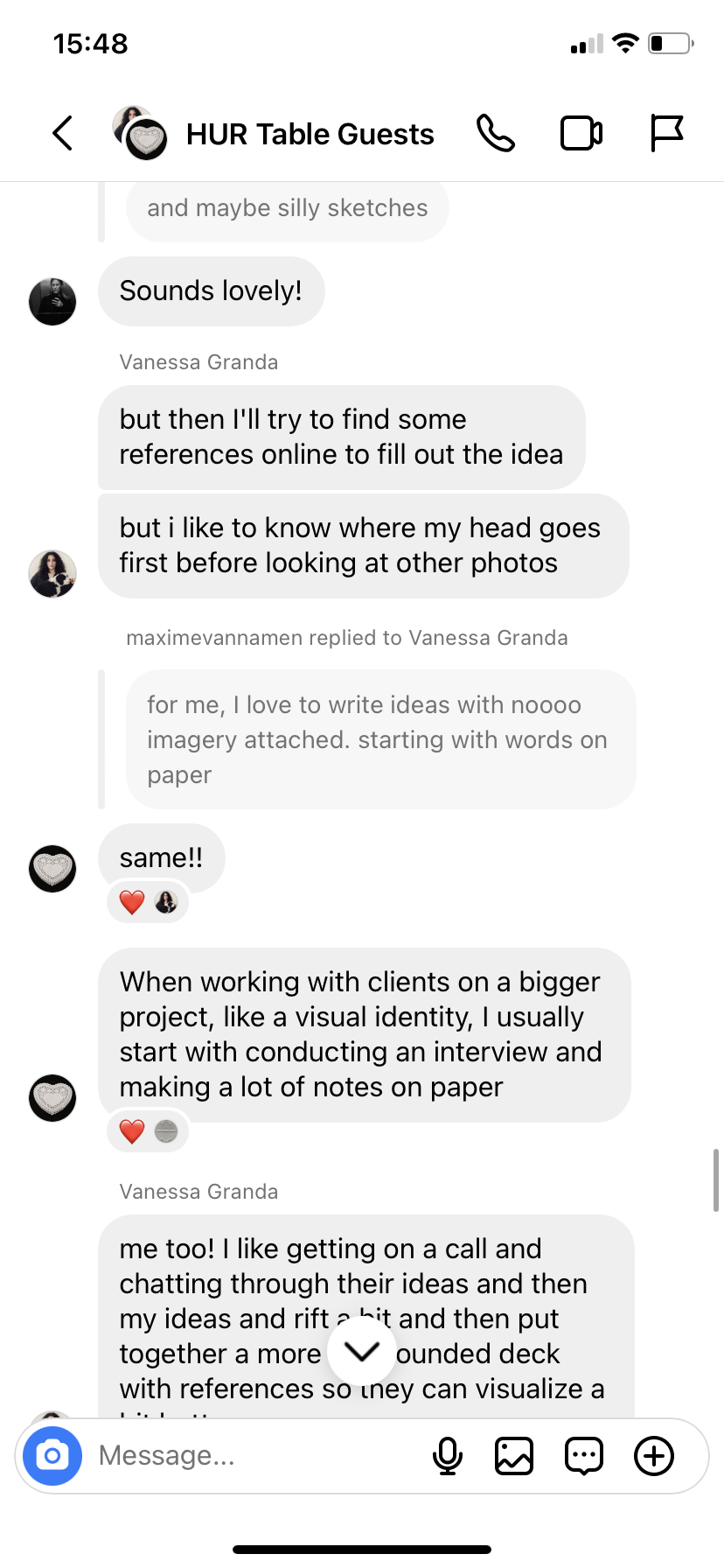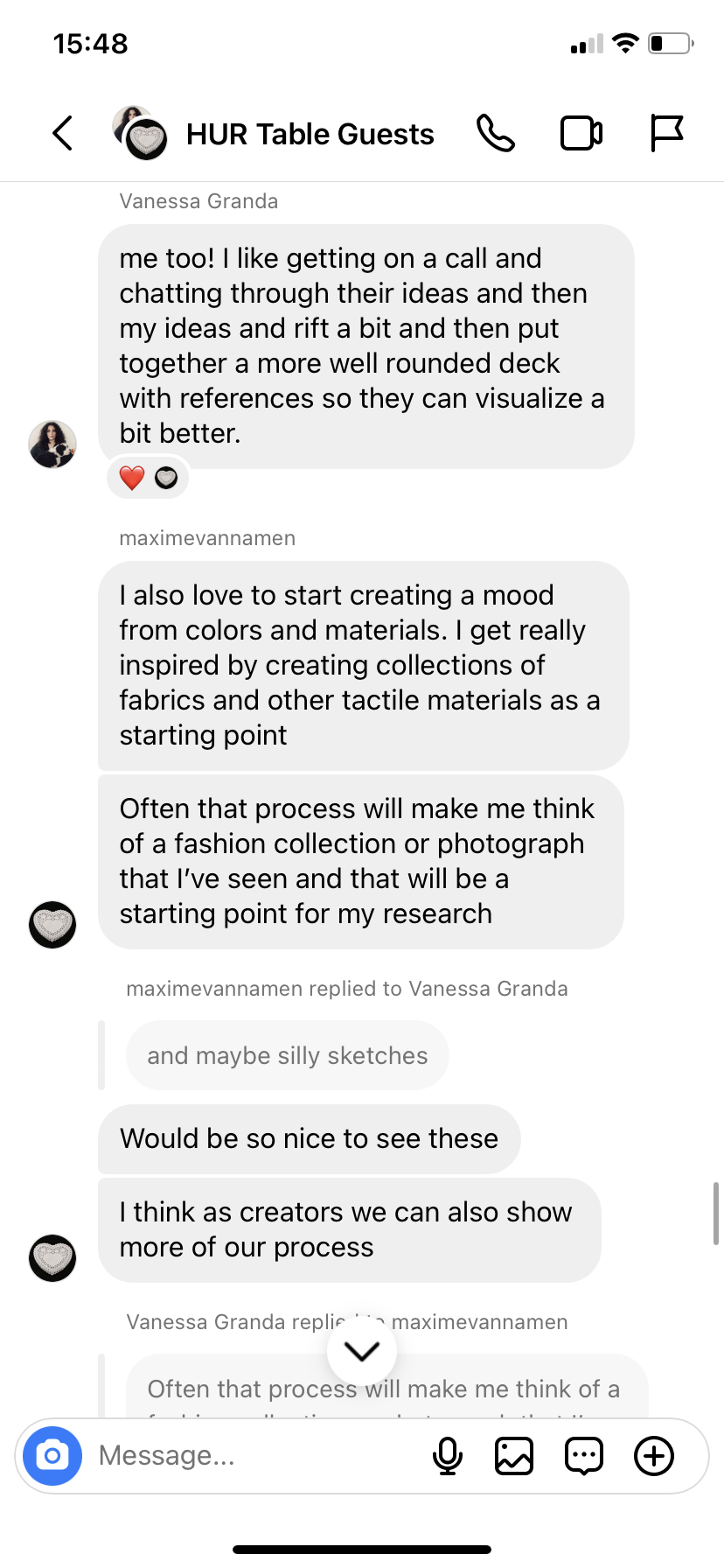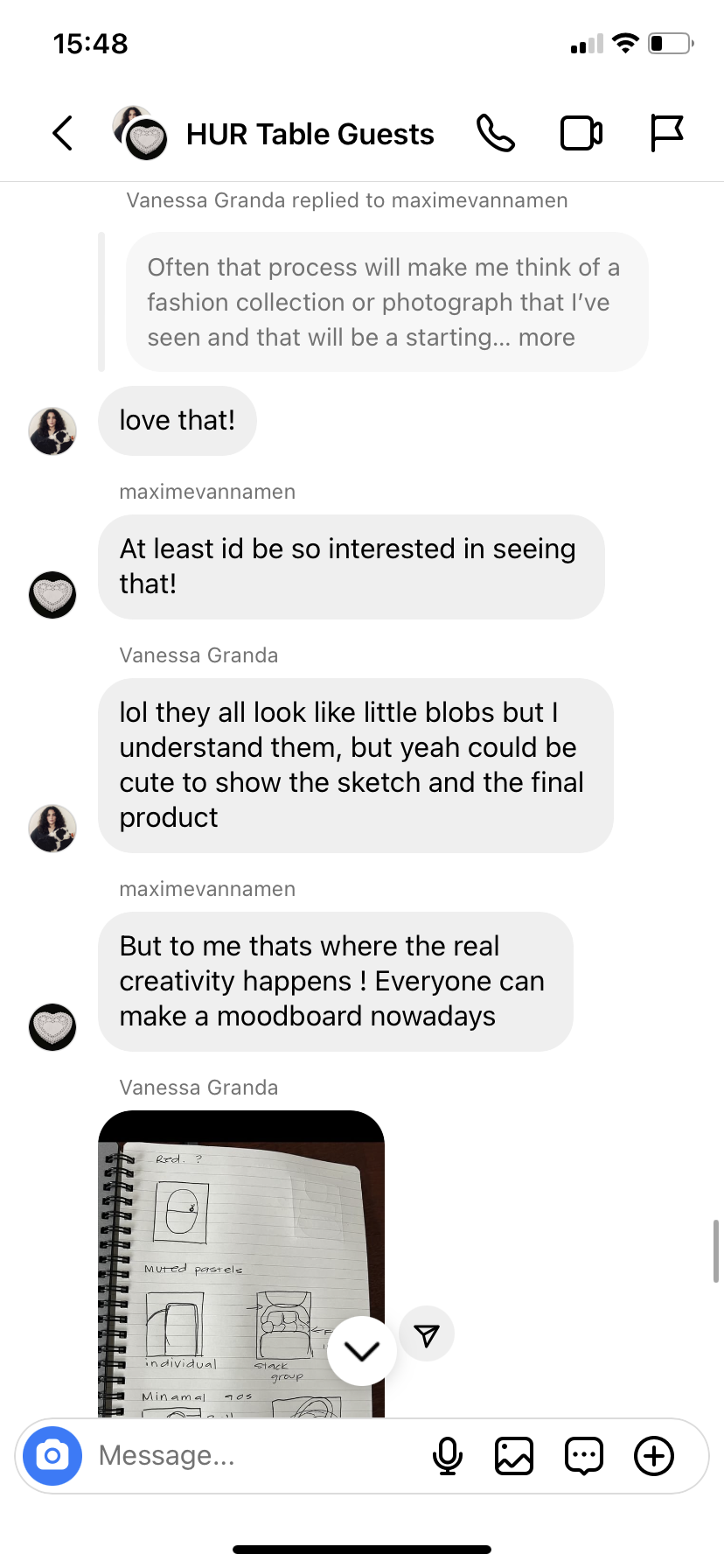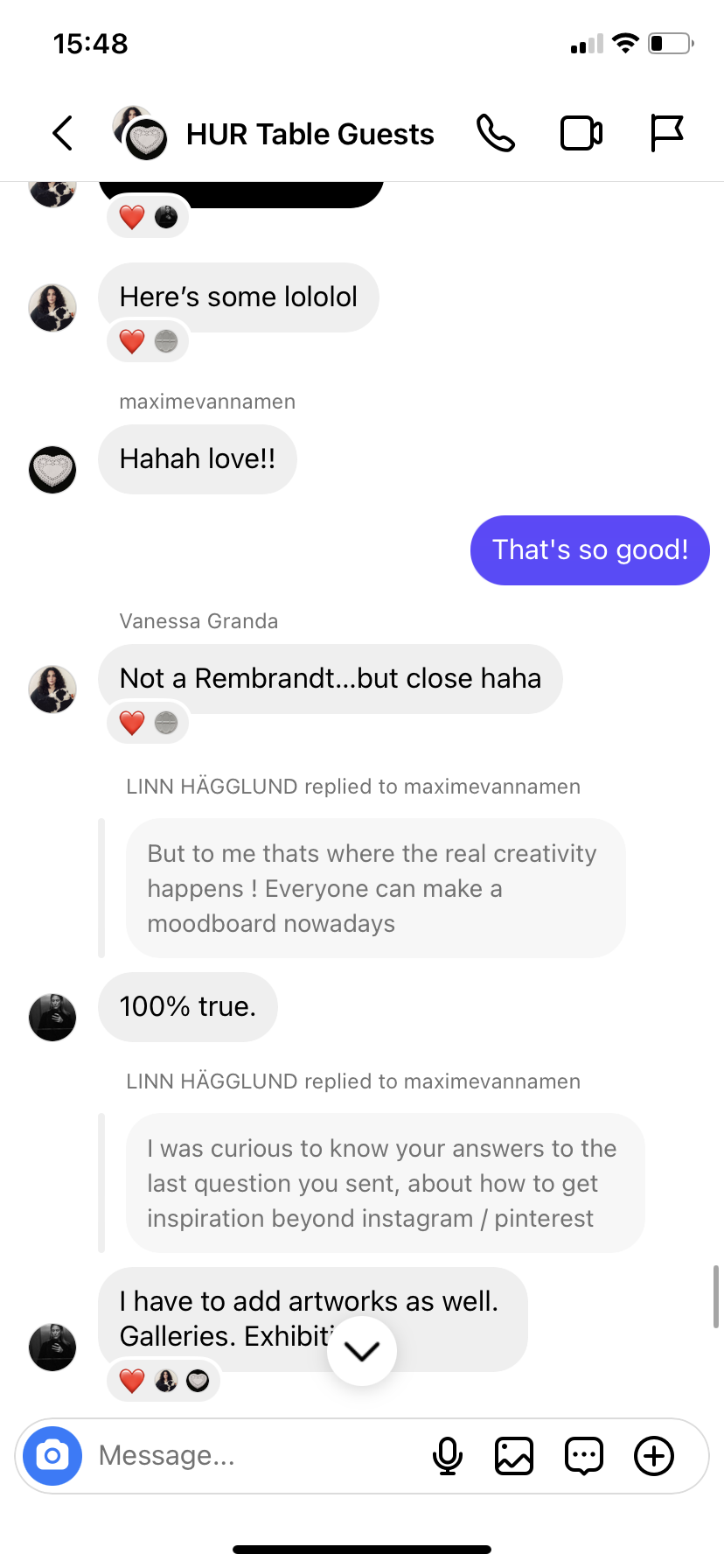Is a Picture Still Worth a Thousand Words?
Is a Picture Still Worth a Thousand Words?
with Linn Hägglund, Vanessa Granda and Maxime van Namen
By HURS team
We process visuals 60,000 times faster than text, but what was the last image that made you stop and actually look? The amount of images we see, scroll through and interact with on a daily basis, makes it hard to be aware of what we see and how those images impact us. From branded billboards to a shoot in your favorite magazine to your mother’s latest Instagram post, most seem to prefer using images over words these days. While there was a short stint where brands were obsessed with quotes and text-based campaigns – Valentino’s collaboration with @werenotreallystrangers in the early 2020’s and Nike’s famous text-based ads come to mind – they quickly returned to the safe haven of image.
Trying to squelch our hunger for new imagery, brands and individuals have become content machines. But more doesn’t always equal better. The impact one image can have on culture has been diluted from a potential defining moment to a fleeting one. And with it, shortening the lifespan and the relevance that image holds. There’s simply always something new, different or more provoking to look at. Secondly, the need for more has resulted in more of the same. While in many ways the accessibility to platforms to save and share references on – Tumblr, Pinterest, Instagram – has been a plus, they’ve also created a moodboard culture where brands and individuals copy and paste concepts and formats they already know work.
Those creating the imagery we look at on the daily are often an afterthought. Historically, photographers and art directors only had to consider the dimensions of the publication they were shooting for. Today, creatives are not only expected to create more, but to create for endless amounts of formats and purposes. From social media to print and from newsletters to dot com.
It begs the question, in today’s hyper visual world, what’s the real purpose of a great image? And what makes a good one? We asked a photographer, an art director and a stylist for their take.
LINN HÄGGLUND
London-based creative director, fashion consultant and stylist Linn Hägglund is known for her timeless approach to style and image making. Hägglund works on styling and consulting, offering brands a perspective beyond creative and styling. Instead, she offers unique insights around product development and merchandising as well as marketing and brand positioning. Over the years Hägglund has worked with numerous brands including Toteme, By Malene Birger and Rose Inc.
VANESSA GRANDA
Vanessa Granda, a Cuban-Lebanese photographer living in New York City, specializes in intimate still life and beauty photographs. She draws influence from design and everyday life, which shapes her graphic approach to finding beauty in the ordinary. Granda has worked with renowned brands and publications including Essence, Google, Glossier, Crown Affair and Family Style.
MAXIME VAN NAMEN
Maxime van Namen is an art director, creative director and designer. Her unique ability to develop brand identities that struck a chord with tastemakers globally to her unfiltered way of capturing women and daily life, have made her a sought after collaborator. Based in Amsterdam, van Namen has helped to develop the look and feel of some of the most exciting brands from the Dutch capital including cotton brand Flore Flore and shop, guest house and restaurant Carmen. She’s also worked with Danish fashion brand Saks Potts and New Zealand brand Paris Georgia.
We asked three experts for their take on what makes a great image, how the digital age as changed how we look at images and their philosophy on using references and moodboards.
